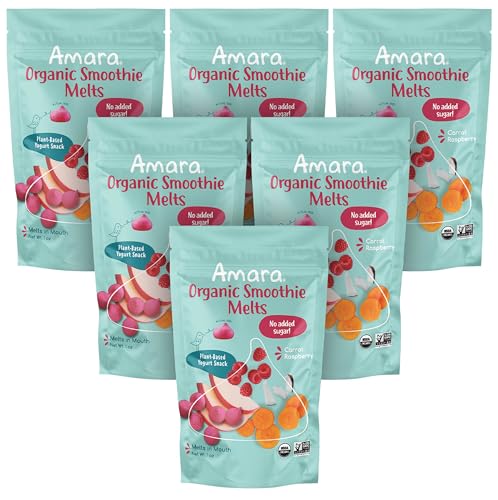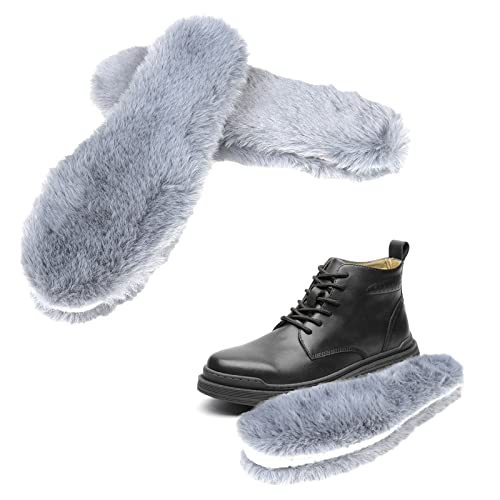jaxmarblebuns
Well-known member
- Joined
- Sep 27, 2021
- Messages
- 232
- Reaction score
- 339
Cages & barn set up

Diet
Are rabbits are fed a pellet only diet. (I personally would prefer to do a natural diet, but we live on a 50’ x 100’ lot with two buildings and 3 cars, so we don’t have enough room to do that ☹). They are occasionally fed veggie scraps and apple slices when we have ones that are safe for them to eat. They get hay if we have any left over from breeding season, or as a treat nonce in a while as well, but they do not get it constantly as a part of their diet.
Rabbits under 5 month (I really don’t know exact age, but I think that’s about it) and pregnant and nursing does are given unlimited pellets. Full ground rabbits are given enough food to last them the day, which is usually one ounce per pound they weigh, which is usually one cup.
X-Cel rabbit feed (location)
Crude protein, not less than…………………….. 18%
Crude fat, not less than…………………….. 2.00%
Crude fiber, not less than……………………. 16.50%
Crude fiber, not more than…………………….. 21.5%
Calcium, not less than……………………. 1.10%
Calcium, not less than……………………. 1.20%
Phosphorous, not less than……………………. .3%
Salt, not less than……………………. .3%
Salt, not more than…………………….. .6%
Vitamin A, not less than……………………. 8800IU/LB
Ingredients
Forage products, plat protein products, processed grain by-products, grain products, cane molasses, vegetable oil, salt, mono dicalcium phosphate, choline chloride, calcium carbonate, manganous oxide, zinc oxide, ferrous sulfate, niacin, copper sulfate, d-calcium pantothenate, vitamin A supplement, riboflavin supplement, vitamin D-3 supplement, vitamin E supplement, calcium iodate, menadiones sodium bisulfite complex, vitamin B012 supplement, d-biotin supplement, pyridoxine hydrochloride and folic acid.
Daily Routine
Although all 6 of us benefit from the rabbits, it is I and my brother’s jobs to take care of them. In the mornings, (I would love to say like 8:00 am but we are home schooled with no jobs atm, so its more like 10:00am or later.) after brake fast we head out to feed and water, as we feed, we take a quick look of each rabbit just to make sure they all look ok. When we have time, we will bring are showman ship animals in to practice with them for about 30mins a day. If the weather is nice, I put the rabbits out in the ground pens (they have a rotating schedule day to day since we only have two pens, to make sure they all get roaming time.) At night we head out again to top off water and make sure very one is doing ok.
Weekly Routine
On Saturdays we do heath checks on all the rabbits and treat any ailments that may be affecting them, we then make record of this. Sometimes I also check to see if there are any shows, but since we are not avid showers I usually don’t bother to. Other than that, nothing really changes from day to day.
Monthly and yearly Routine
Every month the barn is completely cleaned. Cages are torched, manure is bagged, dishes/feeders/bottles are scrubbed and bleached, etc. we also take inventory and check condition of are equipment/if we need anything. Throughout the year we keep an eye on the condition of are equipment and “barn”, but once a year we heavily look over the “bran” especially the roof as it is a canvas car port and gets brittle fast.
Rabbits with Ailments
If a rabbit has mites they are isolated from the herd and treated accordingly, the rest of the herd is treated as well as precaution (fur mites with kitten flee powder and ear mites with garlic infused canola oil.) If a rabbit shows signs of internal/contagious illness they are immediately separated from the herd and their cage/supplies are bleached. We then research the symptoms they are having to find the illness and treat accordingly Depending on the severity and type of illness the rabbit will most likely not be bred, shown, or sold, and will go to the freezer. Noncontagious ailments such as cuts, abscesses, strains, etc. the rabbit will stay with the rest and be treated accordingly.
Breeding
We usually only breed once a year for fairs, and we breed two to three does. We use orchard grass hay for nesting material, the boxes are added at 27 days after the day of breeding, and they usually kindle around 31 days, though we have had some kindle at 28 and 35 days. One week after kindling, if needed, the nest box will be cleaned, leaving as much of the fur as possible. The box is removed when the kits spend the majority of their time out of it, which is usually 3 weeks and 4 in colder weather. The kits are weened at about 7-8 weeks.
Now, all of this is how it should happen. However, we don’t keep up with a lot of it. The only things that stay 100% accurate all the time is the daily routine and kit care. We do all of the things listed, just not as often as we should, and record keeping is close to never done.......... so, ya that's how we raise are rabbits.

Diet
Are rabbits are fed a pellet only diet. (I personally would prefer to do a natural diet, but we live on a 50’ x 100’ lot with two buildings and 3 cars, so we don’t have enough room to do that ☹). They are occasionally fed veggie scraps and apple slices when we have ones that are safe for them to eat. They get hay if we have any left over from breeding season, or as a treat nonce in a while as well, but they do not get it constantly as a part of their diet.
Rabbits under 5 month (I really don’t know exact age, but I think that’s about it) and pregnant and nursing does are given unlimited pellets. Full ground rabbits are given enough food to last them the day, which is usually one ounce per pound they weigh, which is usually one cup.
X-Cel rabbit feed (location)
Crude protein, not less than…………………….. 18%
Crude fat, not less than…………………….. 2.00%
Crude fiber, not less than……………………. 16.50%
Crude fiber, not more than…………………….. 21.5%
Calcium, not less than……………………. 1.10%
Calcium, not less than……………………. 1.20%
Phosphorous, not less than……………………. .3%
Salt, not less than……………………. .3%
Salt, not more than…………………….. .6%
Vitamin A, not less than……………………. 8800IU/LB
Ingredients
Forage products, plat protein products, processed grain by-products, grain products, cane molasses, vegetable oil, salt, mono dicalcium phosphate, choline chloride, calcium carbonate, manganous oxide, zinc oxide, ferrous sulfate, niacin, copper sulfate, d-calcium pantothenate, vitamin A supplement, riboflavin supplement, vitamin D-3 supplement, vitamin E supplement, calcium iodate, menadiones sodium bisulfite complex, vitamin B012 supplement, d-biotin supplement, pyridoxine hydrochloride and folic acid.
Daily Routine
Although all 6 of us benefit from the rabbits, it is I and my brother’s jobs to take care of them. In the mornings, (I would love to say like 8:00 am but we are home schooled with no jobs atm, so its more like 10:00am or later.) after brake fast we head out to feed and water, as we feed, we take a quick look of each rabbit just to make sure they all look ok. When we have time, we will bring are showman ship animals in to practice with them for about 30mins a day. If the weather is nice, I put the rabbits out in the ground pens (they have a rotating schedule day to day since we only have two pens, to make sure they all get roaming time.) At night we head out again to top off water and make sure very one is doing ok.
Weekly Routine
On Saturdays we do heath checks on all the rabbits and treat any ailments that may be affecting them, we then make record of this. Sometimes I also check to see if there are any shows, but since we are not avid showers I usually don’t bother to. Other than that, nothing really changes from day to day.
Monthly and yearly Routine
Every month the barn is completely cleaned. Cages are torched, manure is bagged, dishes/feeders/bottles are scrubbed and bleached, etc. we also take inventory and check condition of are equipment/if we need anything. Throughout the year we keep an eye on the condition of are equipment and “barn”, but once a year we heavily look over the “bran” especially the roof as it is a canvas car port and gets brittle fast.
Rabbits with Ailments
If a rabbit has mites they are isolated from the herd and treated accordingly, the rest of the herd is treated as well as precaution (fur mites with kitten flee powder and ear mites with garlic infused canola oil.) If a rabbit shows signs of internal/contagious illness they are immediately separated from the herd and their cage/supplies are bleached. We then research the symptoms they are having to find the illness and treat accordingly Depending on the severity and type of illness the rabbit will most likely not be bred, shown, or sold, and will go to the freezer. Noncontagious ailments such as cuts, abscesses, strains, etc. the rabbit will stay with the rest and be treated accordingly.
Breeding
We usually only breed once a year for fairs, and we breed two to three does. We use orchard grass hay for nesting material, the boxes are added at 27 days after the day of breeding, and they usually kindle around 31 days, though we have had some kindle at 28 and 35 days. One week after kindling, if needed, the nest box will be cleaned, leaving as much of the fur as possible. The box is removed when the kits spend the majority of their time out of it, which is usually 3 weeks and 4 in colder weather. The kits are weened at about 7-8 weeks.
Now, all of this is how it should happen. However, we don’t keep up with a lot of it. The only things that stay 100% accurate all the time is the daily routine and kit care. We do all of the things listed, just not as often as we should, and record keeping is close to never done.......... so, ya that's how we raise are rabbits.



















































